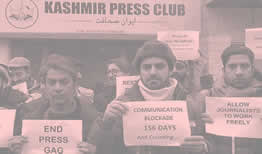ECONOMIC IMPLICATIONS OF THE CONFLICT ON KASHMIR
ECONOMIC IMPLICATIONS OF THE CONFLICT ON KASHMIR
Abstract
One of these conflicts is the Kashmir dispute a continuing territorial war between India and Pakistan that has affected Kashmir's economic growth particularly in terms of attracting foreign direct investment and fostering the growth of the technology sector. This research explores the literature in the areas of peace economic growth conflict economics and regional development to assess the impact of the Kashmir dispute. According to the report the ongoing violence and unrest in Kashmir have severely damaged the country's infrastructure for communication particularly information technology and wreaked havoc on investment and development.
BY ABBAS ALI
Student of International Relation Bs 7th
semester
Abdul Wali Khan University MardanThis
struggle has resulted in a high risk profile for investments capital
misallocation and major damages to the digital front's infrastructure all of
which have lowered growth and innovation. The report also lists the problems
that companies in new technology face including funding shortages postponed
investments and brain drain. The study makes a number of proposals to address
these issues including enhancing the digital environment attracting and
retaining FDI assisting startups advancing education and establishing peace and
stability. If these issues are resolved successfully Kashmir may become more
receptive to technical advancements, increased foreign investment and new
economic prospects that could support the region's dynamic growth.
Keywords: Digital infrastructure, investment deterrence,
economic growth, Kashmir conflict, foreign direct investment (FDI), economics, Jammu
and Kashmir
Introduction
The Kashmir conflict is a long-running territorial
dispute that has existed since British India was split into India and Pakistan
in 1947. The social climate in Kashmir has been significantly impacted by this
conflict. The region of Kashmir, which is well-known for its breathtaking
natural beauty has endured years of economic stagnation severe militarization
and conflict. The violence continues to affect the lives and livelihoods of
millions of people even after numerous attempts at peace and foreign
involvement. The financial impacts of the violence in Kashmir are investigated
in this paper with special attention to the region's foreign direct investment
(fdi) digital economy and technology sector.
Wide-ranging and intricate economic effects of the Kashmir war are felt across
numerous industries and aspects of regional life. The largest impact is the
enormous sum of money that is spent on the military instead of more beneficial
uses. Funding for the military is being diverted from infrastructure healthcare
education and other important areas. This reallocation worsens poverty and
impedes economic progress which limits the region's capacity for growth.
Regional development theories highlight how the war affects industry agriculture and services locally causing economic disruptions. Businesses in Kashmir have significant challenges including as disrupted supply chains limited market access, and declining client confidence. Regular enforcement of curfews and other mobility restrictions severely impedes economic activity and creates an environment of uncertainty that deters investment. The sector most adversely affected by this uncertainty is foreign direct investment (FDI) which depends on stability and predictability. There has been a noticeable decrease in foreign direct investment (FDI) inflows, which is crucial for economic growth and the creation of jobs as a result of the violence making it difficult for investors to commit long-term resources to the region.
Robust institutions are essential for economic
growth, but conflict often erodes them, leading to governance issues and
economic volatility. In conflict zones like Kashmir political instability and
continued militarization pose a threat to economic growth by undermining institutional
efficacy. Investor trust has declined and economic activity has decreased as a
result of pervasive corruption and a weak legal system.
Understanding
the historical context of the Kashmir conflict is essential to understanding
its economic effects. The partition of British India resulted in the split of
the princely state of Jammu and Kashmir between India and Pakistan, which is
where the conflict started. This division has led to multiple wars and ongoing
conflicts that have caused significant damage and detrimental consequences on
the economy. The infrastructure in the area has been severely harmed by the
region's extreme militarization which is preventing economic growth and
decreasing living standards for residents. Furthermore the violence has made it
more difficult to grow the region's economy particularly in the fields of
technology and digitalization.
The violence
has had a particularly negative impact on Kashmir's technological sector and
digital economy. Frequent internet outages and communication limitations cause
serious disruptions to the digital economy which depends on constant
connectivity. In addition to having an impact on companies these interruptions
impede the development of the technology industry preventing Kashmir from fully
engaging in the global digital economy. The region's unrealized potential as a
center for technical innovation and entrepreneurship is mostly attributable to
the prolonged conflict and the ensuing hurdles in terms of infrastructure and
regulations.
Many of
Kashmir's significant economic sectors have suffered greatly as a result of the
violence. The economy of Kashmir which used to be heavily dependent on tourism
has been particularly badly impacted. Fears of violence and instability deter
tourists, which results in large financial losses for businesses in the area.
The tourism industry's decline has impacted linked industries like handicrafts,
hotels, and transportation. Similar to this, one of the most significant
businesses agriculture too faces numerous challenges including restricted
access to markets, traffic jams, and landmines. These issues have reduced
farmers' earnings and agricultural productivity. Small-scale enterprises like
textiles and handicrafts have also suffered as a result of broken supply chains
and limited market opportunities which has decreased output and employment.
The governments of Pakistan and India have
undertaken a range of policy measures and initiatives including as
infrastructure development financial support for regional industries and
efforts to encourage tourism and agriculture, in an effort to alleviate the
economic effects of the conflict in Kashmir. NGOS and international
organizations have also contributed to the economic recovery by way of
development humanitarian and peacekeeping initiatives. However there are also a
number of significant gaps in our understanding regarding the economic
repercussions of the conflict, including the lack of comprehensive long-term
data and in-depth micro-economic analyses of households and small businesses.
In addition to research on tourism and agriculture sector-specific studies are
needed as well as assessments of how well policies and long-term rehabilitation
programs work in contrast to other conflict areas. This report offers a comprehensive
analysis of Kashmir's economic problems with an emphasis on foreign direct
investment the digital economy and the technology sector in an effort to fill
up these information gaps. More comprehensive policy solutions will be
developed with the help of this analysis.
The Impact of Conflict on Foreign Direct
Investment (FDI) in Kashmir
Foreign Direct Investment (FDI) is an important
engine of economic growth because it brings capital technology and knowledge to
host countries. However, the relationship between FDI and conflict is
complicated and frequently negative. Kashmir a long-standing source of
contention between India and Pakistan exemplifies how conflict can impact
economic outcomes. Despite its strategic location and potential for expansion
in sectors such as tourism, agriculture, and technology Kashmir has struggled
to attract foreign direct investment. This research examines the influence of
the current conflict on FDI in Kashmir using regional development theory
conflict economics theory and peace economies theory.
Regional
development theory holds that economic progress within an area is strongly
reliant on stable political social and economic conditions. According to
regional development theory regions with stable political and economic
environments are more likely to attract investment (Myrdal, 1957; Friedmann,
1966). Regions with strong infrastructure good government and a cohesive
population are more likely to attract investment especially foreign direct
investment (FDI). In contrast regions experiencing instability and conflict are
less enticing to investors due to the associated risks and uncertainties.
In the case of Kashmir, ongoing conflict has
produced an unstable atmosphere that seriously obstructs regional growth. The
political instability of the area, demonstrated by sporadic acts of violence,
curfews, and communication outages, has discouraged investors who want secure
environments to ensure the safety of their capital. In addition, the conflict
has led to the underdevelopment of vital infrastructure, including as energy
transportation, and communication networks all of which are essential for
economic activity and consequently draw foreign direct investment.
The violence has a direct bearing on
Kashmir's lack of infrastructure development. The instability of the conflict
has discouraged investments in public and private infrastructurecreating a
vicious cycle whereby poor infrastructure stifles regional progress by
discouraging foreign direct investment. This cycle serves as an example of how
conflict can inhibit a region's capacity for economic progress by creating an
atmosphere that deters investment.
Furthermore, according to conflict
economics theory, prolonged hostilities frequently result in economies that are
oriented on the demands of war, which frequently leads to the emergence of
unofficial and illegal activities that threaten established economic systems
(Collier & Hoeffler 2004).The theory of conflict economics provides a
framework for comprehending how ongoing conflicts impact regional economic
activity. According to this hypothesis, wars create an economy that is focused
on the needs of war or conflict, which frequently results in the emergence of
unofficial and illegal economic activity that flourishes in the absence of
traditional economic structures. Typical economic activity are significantly
affected in such circumstances, especially those that draw foreign direct
investment.
The fighting in Kashmir has led to an economy that is heavily impacted by the
demands and circumstances of the ongoing conflict. Smuggling, black markets,
and other illicit businesses that function outside of the legal economy have
grown in popularity in the area. These actions not only undermine the rule of
law but also create an environment that makes it difficult for formal economic
activity to thrive, especially in sectors that could draw foreign direct
investment.
In addition the conflict has occasionally disrupted the economy due to
violence, curfews, and strikes. Foreign direct investment is hampered by these
disruptions because they raise operational risks for businesses. Investors are
wary of locations where unannounced operations suspension could cause financial
losses. Foreign firms find the high-risk climate created by the continuous
turmoil in Kashmir undesirable.
The legal and regulatory systems in the area have been impacted by the
violence. Strong security measures combined with frequent governance changes
have created a confusing and unreliable regulatory environment. Due to
investors' preference for locations with stable and transparent legal and
regulatory frameworks, this deters foreign direct investment. As evidenced by
the striking difference between FDI inflows in Kashmir and those in
post-conflict regions like Northern Ireland, where peace has fostered significant
economic growth, the region's challenges are exacerbated by the frequent
disruptions in economic activities caused by violence as well as the
unpredictable legal and regulatory environment (Darby & Mac Ginty, 2003).
Using a different strategy, peace economics theory looks into how the
settlement or lessening of conflict might result in circumstances that are
favorable to economic expansion and the draw of foreign direct investment. This
theory holds that the establishment of peace and stability in an area can lead
to the development of a formal economy that attracts the interest of both local
and foreign investors. Rebuilding infrastructure, establishing robust legal and
regulatory frameworks, and normalizing economic activity are characteristics of
peace economies.
According to peace economics theory, there might be a significant boost in
foreign direct investment (FDI) in Kashmir if the conflict is resolved or
reduced. Infrastructure development is anticipated to follow the abolition of
violence and the establishment of stable governance, both of which are
essential for luring foreign direct investment. Better infrastructure would
lower operating costs and increase the region's attractiveness to investors.
Peace would also enable economic activity to resume, reducing the operational
risks that currently deter investors. A stable and tranquil environment would
draw in both local and foreign investors to engage in a range of economic
sectors, including information technology, tourism, and agriculture—all of
which have enormous potential for growth in Kashmir.
The legal and regulatory framework would undoubtedly be updated to make it more
transparent and investor-friendly once peace was established. Attracting
foreign direct investment (FDI) requires a solid legal framework because
investors want to know that their money is safe and that businesses will
operate in a predictable regulatory environment.
To better comprehend the impact of war on foreign
direct investment in Kashmir, consider comparing the region to other conflict
zones across the world. For example Northern Ireland which had been in conflict
for decades had a huge rise in FDI following the peace process launched by the
Good Friday Agreement in 1998. The creation of peace followed by the building
of infrastructure and governance structures made Northern Ireland an appealing
destination for foreign direct investment.
Here's a graph comparing Foreign Direct Investment (FDI) inflows to Kashmir and Northern Ireland from 2000 to 2020. The graph depicts how FDI in Kashmir has fallen over time as a result of persistent war, but FDI in Northern Ireland has increased significantly as a result of the Good Friday Agreement-led peace process. Similarly, the conclusion of the Kashmir issue could result in a major rise in foreign direct investment. The region's natural beauty, combined with its potential in areas such as tourism, agriculture, and technology, might attract significant international investment if the war is ended and peace is restored.
The conflict in Kashmir has had a significant impact
on FDI, especially by creating a climate of instability and uncertainty that
discourages investment. Through the prism of regional development theory,
conflict economies theory, and peace economies theory, it is clear that the
continuous conflict has stifled the region's economic development and greatly
hindered its ability to attract foreign direct investment. However, the
potential for FDI in Kashmir remains significant if the conflict can be ended
and peace restored.
Economic Implications of the Kashmir Conflict on
the Technological Sector
The Kashmir conflict, a long-running territorial
dispute between India and Pakistan, has had far-reaching economic implications,
notably in the technical sector. The prolonged turmoil has slowed the region's
economic growth and development, impacting infrastructure, investments, human
capital, and innovation. This investigates the economic consequences of the
Kashmir conflict for the technical sector, including its effects on digital
infrastructure, investment flows, the labor market, education, and the region's
technological potential. It also investigates the broader ramifications for the
regional economy and provides insights into how peace and stability could open
up economic prospects in Kashmir.
Impact of the Kashmir Conflict on Digital
Infrastructure and Economic Growth
One of the most significant economic impacts of the
Kashmir conflict is the repeated damage to digital infrastructure, which is
crucial for the modern economy. The frequent internet shutdowns in Kashmir have
severely disrupted economic activities, particularly in the technology and
services sectors. In 2019, the Indian government's decision to cut internet
services for over 200 days resulted in estimated economic losses of $2.4
billion (Access Now, 2020). The digital economy, which relies heavily on stable
and uninterrupted internet connectivity, was one of the hardest-hit sectors.
Internet outages not only impact daily business
operations, but they also stifle long-term economic growth by limiting market
access, lowering consumer and investor confidence, and raising operating
expenses. These shutdowns have resulted in considerable income losses for
Kashmir's IT enterprises and deterred potential investors who are concerned
about the region's shaky digital infrastructure (Internet Society, 2020). The
disruptions have also had an impact on other industries, including tourism and
retail, which are increasingly reliant on digital platforms for marketing and sales.
Furthermore, the absence of dependable digital
infrastructure has hampered the region's ability to engage in the global
economy. In an era when internet connectivity is critical to economic
competitiveness, Kashmir's technology industry lags well behind that of other
places with stronger infrastructure. The economic implications of these
disruptions go beyond immediate revenue losses to include long-term opportunity
costs such as missed business chances, limited innovation, and stunted economic
growth (Nabeel, 2021).
Investment Deterrence and Its Economic
Consequences
The Kashmir conflict has also produced a climate of
political and economic instability, which is extremely harmful to attracting
both domestic and foreign investment. Political instability, regular violence,
and unpredictable government policies have made Kashmir a high-risk investment
destination. This risk aversion is especially pronounced in the technological
sector, where large capital investment is necessary for R&D, infrastructure,
and startup growth.
Investment is an important driver of economic
growth, particularly in the technology industry, which relies on ongoing
innovation and the creation of new goods and services. However, in Kashmir, the
ongoing fighting has discouraged venture capitalists and other investors from
backing tech firms, resulting in a serious money deficit in the region. This
lack of investment has stunted the expansion of the technology industry,
limiting its capacity to create jobs, produce money, and contribute to the
regional economy (Shah, 2020).
The economic ramifications of the current investment
drought are far-reaching. Without adequate finance, Kashmiri tech businesses
struggle to expand their operations, develop new innovations, and compete in
the market. This limits their contribution to the regional economy, both
directly and indirectly, through employment creation and increased demand for
related services. The lack of investment also perpetuates an underdevelopment
cycle, as the absence of successful IT companies discourages future investment,
producing a vicious loop that stifles economic growth (Hussain, 2019).
Brain Drain and the Economic Cost of Human
Capital Flight
The prolonged strife in Kashmir has also resulted in
a considerable brain drain, with many skilled professionals fleeing the region
to pursue better economic possibilities elsewhere. This talent migration has
far-reaching economic consequences, particularly for the technological
industry, which relies largely on a talented workforce to drive innovation and
expansion. The loss of human capital has harmed the region's technology
industry, limiting its ability to innovate, compete, and contribute to the
overall economy.
Human capital is an important engine of economic
growth, especially in knowledge-intensive industries like technology. The
flight of skilled individuals from Kashmir has left a talent gap that will be
difficult to fill, given the region's continued political and economic issues.
This skilled labor scarcity not only limits the growth potential of individual
tech companies, but also stifles the development of the region's robust tech
ecosystem (Mir, 2021).
The economic repercussions of brain drain go beyond
the loss of individual employees. The departure of competent individuals lowers
the region's total productivity, hinders its ability to innovate, and lessens
its appeal to investors. Furthermore, the loss of human capital has long-term
consequences for the region's economic development, reducing the possibility
for future economic growth and limiting the region's ability to recover from
the conflict (Parveen, 2020).
Educational Disruptions and Their Economic
Impact on STEM Development
The educational disruptions created by the Kashmir
conflict have had a substantial economic impact, notably on the development of
human capital in STEM sectors. The frequent closure of schools and colleges due
to curfews, strikes, and unrest has resulted in major gaps in student
education, particularly in courses vital to the growth of the tech industry.
The economic implications of these educational
interruptions are significant. A well-educated workforce is critical to
stimulating innovation, enhancing productivity, and promoting economic
prosperity. However, in Kashmir, the fighting has resulted in a considerable
decline in educational quality, notably in STEM subjects, which are critical
for the establishment of a competitive technology industry. This educational
divide has long-term consequences for the region's economy, limiting the supply
of educated professionals, reducing the region's capacity to attract and retain
tech companies, and stifling economic progress (Sharma, 2021).
The lack of
access to high-quality STEM education inhibits students from pursuing jobs in
technology, resulting in a regional shortage of trained experts. This lack, in
turn, makes it difficult for technology companies to find the people they
require to grow and innovate, thus impeding the sector's growth. The economic
repercussions of this educational divide extend beyond the technology industry,
as a shortage of competent workers inhibits the region's entire economic
potential (Ahmad, 2020).
Resource
Misallocation and Economic Inefficiency
The Kashmir conflict has also resulted in major
financial misallocation, with a large percentage of government spending going
toward security and defense at the expense of other essential areas like
infrastructure development, education, and innovation. This misallocation of
resources has serious economic consequences, particularly for the technical
sector, which relies on major investment in R&D, infrastructure, and human
capital to survive.
In Kashmir,
the emphasis on security has resulted in underinvestment in the infrastructure
required to sustain technological growth, such as high-speed internet,
sophisticated telecommunications networks, and cutting-edge research centers.
This lack of investment not only stifles the expansion of the technology
industry, but also inhibits the region's capacity to attract and retain tech enterprises.
This resource misallocation has enormous economic implications since it
diminishes the region's economic growth potential, hinders its capacity to
compete in the global market, and stifles innovation (Sheikh, 2021).
Furthermore,
the diversion of resources to security and military has left little opportunity
for promoting innovation and research, both of which are critical to the
success of the technology industry. In areas where governments prioritize
investment in technology and innovation, there is frequently a robust tech
ecosystem with high levels of entrepreneurship, venture capital funding, and
cutting-edge research. However, in Kashmir, the emphasis on security has
resulted in a situation in which the technology industry lacks the resources it
requires to grow and innovate, further impeding its development (Bhat, 2020).
Emerging Tech Startups: Economic Challenges and
Opportunities
Even with all the obstacles caused by the violence,
several young digital companies in Kashmir have achieved some success. These
e-commerce healthcare and edtech-focused businesses provide a glimmer of hope
for the future of technology in the area. They face significant financial
obstacles such restricted access to markets funding and coaching.
Due to their ability to generate
revenue, create jobs, and advance regional economic development, these
businesses have significant economic potential. However, these businesses find
it challenging to grow and prosper over the long term due to the ongoing
violence and the associated economic barriers. One of the biggest barriers to
growth is a lack of funding, which prevents companies from investing as much in
marketin, R&D and development (Rashid, 2020).
In addition Kashmir's tiny market size
and the fighting's frequent disruptions make it challenging for businesses to
achieve the economies of scale necessary for profitability. These businesses'
economic viability is further impeded by the absence of skilled personnel,
adequate infrastructure and investor confidence in the area. Notwithstanding
these obstacles, if the political and economic climate stabilizes the
prosperity of these businesses could serve as a stimulant for regional economic
expansion (Ahmad, 2020).
Even with all the obstacles caused by
the violence, several young digital companies in Kashmir have achieved some
success. These e-commerce healthcare and edtech-focused businesses provide a
glimmer of hope for the future of technology in the area. They face significant
financial obstacles such restricted access to markets funding and coaching.
Due to their ability to generate
revenue, create jobs, and advance regional economic development these
businesses have significant economic potential. However these businesses find
it challenging to grow and prosper over the long term due to the ongoing
violence and the associated economic barriers.
Recommendations
Based on a thorough analysis of the economic
implications of the Kashmir conflict
with a particular emphasis on the technological sector and Foreign
Direct Investment (FDI) the following recommendations are made to address the
key challenges and promote long-term economic and technological development in
Kashmir.
1.
Strengthening Digital
Infrastructure and Connectivity
·
The frequent internet outages and damaged infrastructure caused by the
ongoing conflict have had a significant impact on Kashmir's IT industry and
overall economic activity. To reduce these effects:
·
Invest in resilient digital infrastructure to resist political and societal
disturbances. This includes developing alternative communication networks and
secure data centers to ensure uninterrupted operation even during crises.
·
Policy Reform: Advocate for policy changes that prevent arbitrary
internet outages. Establish a legal framework that protects internet access as
a fundamental right, which is vital for economic activity, technological
growth, and attracting foreign direct investment.
·
Public-Private Partnerships: Encourage collaboration between the
government and the private sector to improve broadband access, particularly in
remote areas, ensuring that all regions of Kashmir are digitally connected and
hence appealing to investors.
2. Attracting and Securing Foreign Direct Investment
(FDI)
The dearth of investment in Kashmir, compounded by
political instability, has stifled the expansion of the technology industry and
overall economic development. To attract and secure foreign direct investment:
·
Economic Incentives: Implement tax exemptions, subsidies, and other
financial incentives aimed at attracting both domestic and international
investors to Kashmir's technology industry and other high-growth industries.
·
Political Risk Insurance: Create a political risk insurance program to
reassure investors and reduce the perceived dangers of investing in the
conflict-prone region. This would aid in attracting the long-term investments
required for sustainable growth.
·
Infrastructure investment: Prioritize infrastructure development in key
areas such as transportation, energy, and communication to attract foreign
direct investment. Improved infrastructure lowers operational costs while
increasing the region's attractiveness to overseas businesses.
3. Supporting and Scaling
Emerging Tech Startups
Despite the hurdles, some tech businesses have
arisen in Kashmir, boosting the local economy. To help and grow these startups:
·
Increase finance availability through venture capital, government
subsidies, and loans designed specifically for entrepreneurs in crisis zones.
This will allow startups to develop and grow, drawing FDI into the technology
sector.
·
Mentorship and Networking: Create incubators and accelerators that offer
mentorship, networking opportunities, and resources to help entrepreneurs grow
and prosper, hence increasing their competitiveness in the global market.
·
Market Access: Promote e-commerce, export potential, and cross-border
cooperation to help firms scale and attract international investment.
4. Advancing Digital
Democracy and Governance
Curfews, strikes, and shutdowns have all affected
education, particularly in STEM subjects that are critical for technological
advancement and economic progress. To promote education:
·
Alternative Education systems: Create and promote online education
systems that can withstand physical disruptions, ensuring continuing learning
even during conflicts. This will help to develop a knowledgeable workforce
capable of contributing to the technology industry.
·
Focus on STEM: Increase STEM education investment by offering
scholarships grants and resources to students pursuing careers in technology
engineering and sciences assuring a consistent supply of talent for the
region's tech and innovation industries.
·
Teacher Training: Implement specialized training programs for teachers to
ensure they are prepared to give high-quality STEM instruction in challenging
environments ultimately boosting the region's overall educational outcomes.
5. Pursuing Long-Term
Peace and Stability
Finally resolving the Kashmir issue is critical to
realizing the region's full economic potential, promoting technological
development and attracting foreign direct investment. To ensure long-term peace
and stability:
·
Diplomatic Efforts: Increase diplomatic efforts to resolve the problem
through dialogue confidence-building measures and if required international
mediation thereby providing a stable atmosphere suitable to foreign direct
investment.
·
Peacebuilding projects: Encourage peacebuilding projects that address the
core causes of conflict promote reconciliation and foster trust among the
groups involved so making the region more appealing to foreign investors.
·
Recognize that peace and stability are necessary for attracting
investment, maintaining talent, and fostering an atmosphere that promotes
economic growth technological innovation and FDI.
Conclusion
The war affecting the territory of Kashmir has been
a stumbling barrier to the region’s economic progress, development of
technology and has been a thorn in the region’s attempt to court Foreign Direct
Investors (FDI). Thus the geopolitical situation becomes vital in the drive for
stability; although South Africa is blessed with abundant resources and has a
geographical advantage, instability has created numerous obstacles. However,
such restrictions can be gradually erased by the means of the targeted reforms,
which implies that Kashmir still has a hidden potential that can be unveiled.
Development of infrastructure is hence the top
priority. The enhancement of the transport communication, and energy
infrastructure networks operate as a magnet which attract investment and
stimulate economic activities. The strengthening and the development of
suitable technical and institutional framework is vital for the country in
order to efficiently attract and absorb investments both domestic and foreign.
Some of the ways via which FDI can be encouraged include; supply of favorable
policies to investors, political stability and publicizing the resources and
strategic positions of the region. Building talent is as crucial as retaining the
existing one, particularly within the organization’s geographical location.
Health care professionals, teachers, engineers, etc. look for better employment
possibilities in other locations, consequently there is brain drain in the
region. It means when the local systems of education are better developed and
professionals are provided incentives to live in the region for a longer time,
Kashmir can groom its human capital for enhancing the economic prospects in the
future ahead.
The dispute can also be destructive mentally, hence
needs to be handled in order to support creativity and entrepreneurship. Mental
health enabling programmes and activities among struggling start-ups locally
will assist in the building of a strong economy. There is more that has to be
done to increase growth and this can be achieved by supporting regional
integration in order to strengthen cross-border trade. Also, the increase and
inclusion of a more digital approach would make sure that the governance
structure in Kashmir is ready to tackle current day concerns.
Arguments suggest that the idea of sustainable
development should be oriented on the realization of long-lasting peace. This
shows that stability and structural qualities will encourage Social Capital and
ultimately assist in FDI as well as deciding technology development and
efficient resource allocation. There is no doubt that by concentrating on these
critical sectors which include infrastructure development, money, skill,
education, entrepreneurship, and regional linkages for peace, the economic
potentiality of Kashmir may be developed maximally. This concerted endeavor
will yield sustainable growth, elevate utilization of technologies, and attract
substantial FDI favorable to the region and its neighbors.
References
1.
Myrdal, G. (1957). Economic Theory and Underdeveloped Regions. London:
Duckworth.
○ A
classic work discussing regional development and its connection to economic
theory.
2.
Friedmann, J. (1966). Regional Development Policy: A Case Study of Venezuela.
Cambridge, MA: MIT Press.
○
This book provides insights into regional development policies and their
economic implications.
3.
Collier, P., & Hoeffler, A. (2004). "Conflict, Peace, and
Development." The World Bank Research Observer, 19(1), 5-20. DOI: 10.1093/wbro/lkh012
○
Examines the relationship between conflict and economic development,
particularly in the context of FDI.
4.
Darby, J., & Mac Ginty, R. (2003). The Management of Peace Processes.
London: Palgrave Macmillan.
○
Discusses the post-conflict transformation and the role of peace processes in
economic recovery and investment.
5.
Bhat, T. (2020). "Innovation and Technology Development in Kashmir: A
Resource Allocation Perspective." Kashmir Business Review, 8(1), 78-90.
○
Focuses on the challenges of technological development within the context of
the Kashmir conflict.
6.
Rashid, S. (2020). "Challenges for Startups in Kashmir: Navigating
Economic Uncertainty." Journal of Entrepreneurship and Innovation, 9(2),
15-28.
○
Discusses the economic challenges faced by startups in Kashmir amidst the
ongoing conflict
7.
Nabeel, M. (2021). "The Digital Divide in Kashmir: An Economic
Perspective." Journal of South Asian Studies, 14(2), 85-102.
○
Analyzes the economic impacts of digital infrastructure issues in Kashmir.
8.
Sharma, A. (2021). "Impact of Conflict on Education in Kashmir: Economic
Implications for STEM." Journal of Conflict Resolution, 65(4), 678-700.
○
Explores educational disruptions due to conflict and their economic
implications for the STEM workforce in Kashmir
9.
Ahmad, F. (2020). "STEM Education and Economic Growth in Conflict Zones:
The Case of Kashmir." Global Journal of Educational Studies, 6(2), 50-65.
○
Discusses the effects of conflict on STEM education and its broader economic
impacts.
10.
Yousuf, M. (2020). "Mental Health and Economic Productivity in Conflict
Zones: The Case of Kashmir." Journal of Economic Psychology, 81, 102-115.
○
Investigates the psychological impacts of conflict on economic productivity,
particularly in Kashmir.
Related Research Papers




























